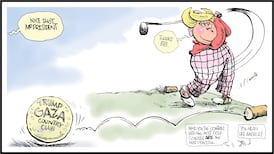The downward trend in the number of fatal accidents over recent years has been reversed. What makes the situation so tragic is that most of those who died were young and vigorous and had much to contribute to society. Inevitably, the accidents were caused by a variety of factors. But speed appeared to play a part in many of them.
The quality of driving on Irish roads is moderate, at best, and, at worst, lethally dangerous. Anyone travelling between our major towns and cities on a holiday weekend is aware of just how perilous life can become when young drivers, in particular, ignore the rules of the road and overtake at inappropriate times and speeds.
The training provided for motorists is seriously inadequate; arrangements in relation to long-term provisional driving licences almost encourage incompetence and the Government's testing system is under-funded and affected by long delays. Political commitments to address all these faults have been given. And a new Road Traffic Bill will shortly come before the Dáil. But, in the meantime, people are dying in increasing numbers.
Fear of detection and prosecution has been found to directly influence the law-abiding behaviour of motorists. The introduction of the penalty points system had an immediate impact on the behaviour of drivers. Suddenly, speed limits were being obeyed and seat belts worn. There was a sharp drop in the number of people being killed and injured. But the near invisibility of members of the Garda Síochána as enforcers of the traffic laws gradually took effect and motorists began to revert to their dangerously-immature ways.
Given the limited amount of Garda time devoted to traffic duties, it is unfortunate that efforts to enforce the laws on speeding may be thwarted by recent legal challenges. Radar guns are the most common and flexible method used to counteract speeding both here and in Europe. Charges are usually not preferred until limits are exceeded by three or four miles per hour and Garda evidence has traditionally been accepted by the court.
Now, however, the absence of a print-out from the radar gun - it simply does not have that capacity - has been found in the District Court to infringe the defence rights of motorists. A similar ruling was recently made in relation to drink-driving evidence. This approach does not focus on whether an offence was committed, but concentrates on legal technicalities and makes enforcement more problematical. It is a negative development.
The Minister for Transport, Mr Brennan, should close any potential loopholes in the forthcoming Road Traffic Bill.








